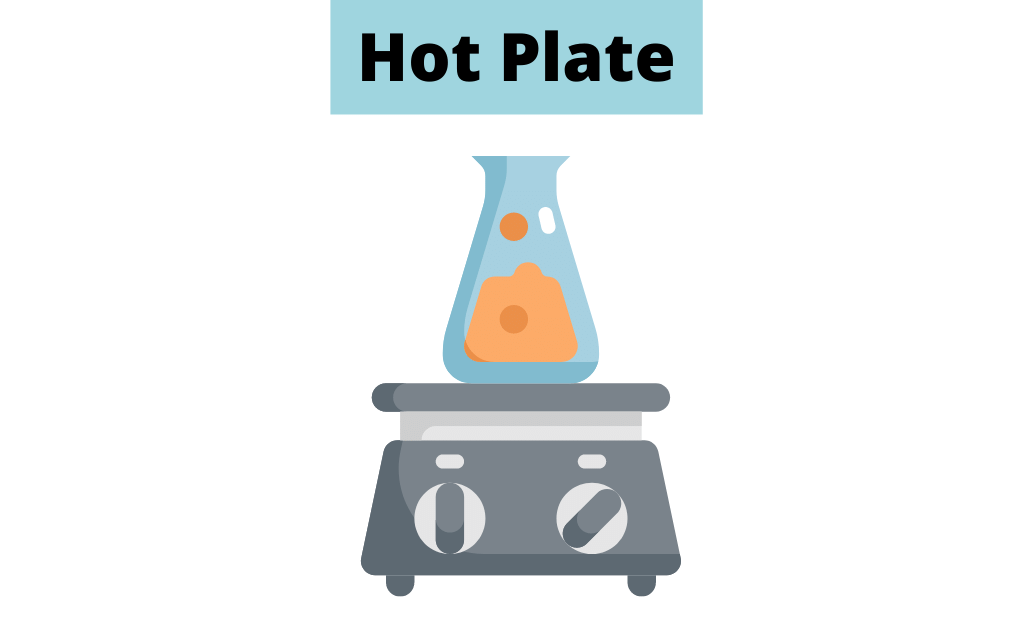Written by Adeel Abbas
Hot Plate Definition
Table of Contents
A hot plate is a laboratory device used to heat and maintain the temperature of a sample.
It typically consists of a flat metal plate that is heated by an electrical coil or other heat source.
Hot plate is used as advance Lab research tool in research labs Like natural product chemistry and synthetic chemistry.

Principle of Hot Plate
Hot plates work based on the principle of heating through conduction. When a sample is placed on the hot plate, the heat is transferred from the plate to the sample through direct contact.
Working of Hot Plate
Hot plates are typically operated using a variable temperature control, which allows the user to set and adjust the desired temperature of the sample. The temperature control is connected to a heating element that is embedded in the plate.
When the user sets the desired temperature, the heating element is activated, and the plate begins to heat up. The sample is then placed on the hot plate, and the heat is transferred from the plate to the sample through conduction.
Types of Hot Plate in Chemistry Lab
There are several types of hot plates available for use in the chemistry lab, some of which include:
- Magnetic Hot Plate: A hot plate that includes a magnetic stirrer for stirring the sample while it is being heated.
- Gas Hot Plate: A hot plate that is powered by natural gas or propane.
- Electric Hot Plate: A hot plate that is powered by electricity.
- Temperature-Controlled Hot Plate: A hot plate that includes a feedback control system to maintain the temperature of the sample at a constant level.
Uses of Hot Plate in Chemistry Lab
Hot plates are commonly used in the chemistry lab for a variety of purposes, including:
- Heating of Solvents: Hot plates are often used to heat solvents, which are used in many chemical reactions.
- Evaporation of Solvents: Hot plates can be used to evaporate solvents, leaving behind a solid sample.
- Melting of Substances: Hot plates can be used to melt substances, making them easier to work with.
- Maintaining Temperature: Hot plates can be used to maintain a constant temperature in a sample, which is often necessary in certain chemical reactions.
FAQs
What is a hot plate used for in a lab?
A hot plate is a laboratory device that is used to heat and maintain the temperature of a sample. It is commonly used in the chemistry lab for a variety of purposes, including heating of solvents, evaporation of solvents, melting of substances, and maintaining a constant temperature in a sample.
What is the purpose of hot plate?
The purpose of a hot plate is to heat and maintain the temperature of a sample in the laboratory. It is an important tool for many chemical reactions that require precise temperature control to achieve the desired outcome.
What is the working principle of hot plate?
Hot plates work based on the principle of heating through conduction. When a sample is placed on the hot plate, the heat is transferred from the plate to the sample through direct contact. The hot plate typically consists of a flat metal plate that is heated by an electrical coil or other heat source. The user sets the desired temperature using a variable temperature control, and the heating element is activated to heat the plate. The sample is then placed on the plate, and the heat is transferred through conduction.